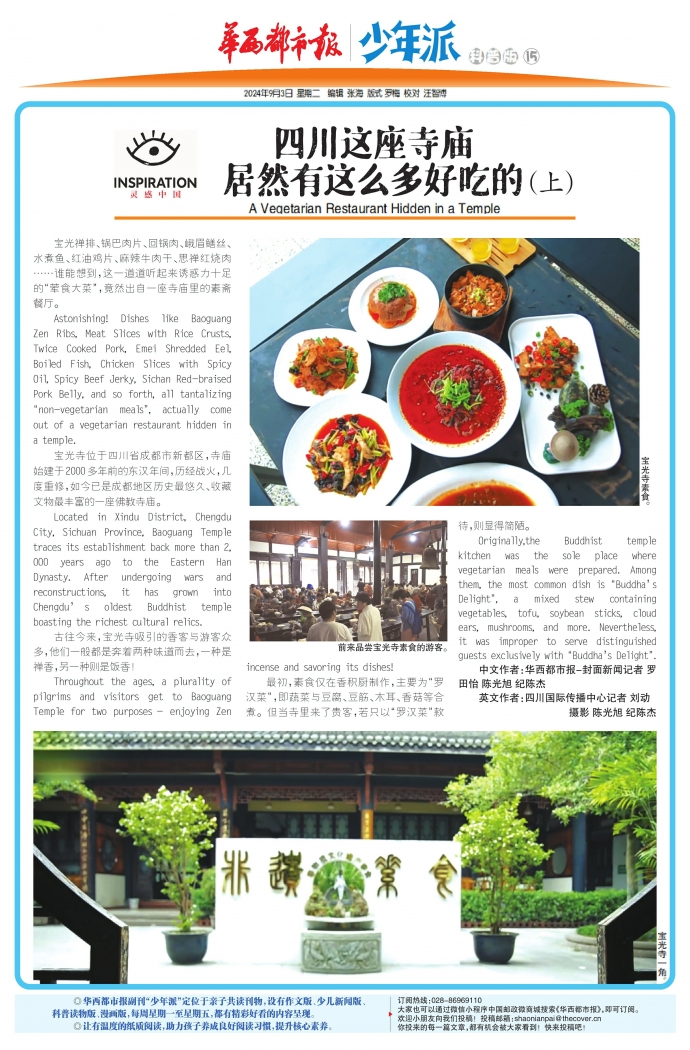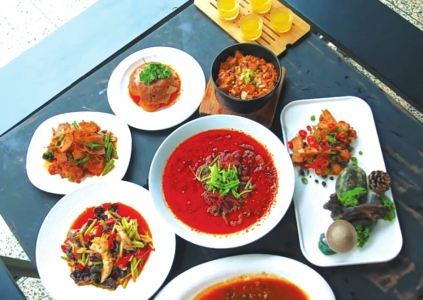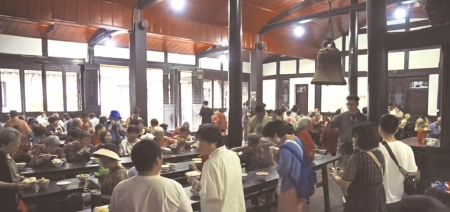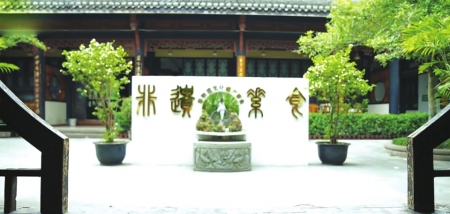四川这座寺庙 居然有这么多好吃的(上)
A Vegetarian Restaurant Hidden in a Temple
宝光寺素食。
前来品尝宝光寺素食的游客。
宝光寺一角。
宝光禅排、锅巴肉片、回锅肉、峨眉鳝丝、
水煮鱼、红油鸡片、麻辣牛肉干、思禅红烧肉……谁能想到,这一道道听起来诱惑力十足的“荤食大菜”,竟然出自一座寺庙里的素斋餐厅。
Astonishing! Dishes like Baoguang
Zen Ribs, Meat Slices with Rice Crusts, Twice Cooked Pork, Emei Shredded Eel, Boiled Fish, Chicken Slices with Spicy Oil, Spicy Beef Jerky, Sichan Red-braised Pork Belly, and so forth, all tantalizing“non-vegetarian meals”, actually come out of a vegetarian restaurant hidden in a temple.
宝光寺位于四川省成都市新都区,寺庙始建于2000多年前的东汉年间,历经战火,几度重修,如今已是成都地区历史最悠久、收藏文物最丰富的一座佛教寺庙。
Located in Xindu District, Chengdu City, Sichuan Province, Baoguang Temple traces its establishment back more than 2, 000 years ago to the Eastern Han Dynasty. After undergoing wars and reconstructions, it has grown into Chengdu’ s oldest Buddhist temple boasting the richest cultural relics.
古往今来,宝光寺吸引的香客与游客众多,他们一般都是奔着两种味道而去,一种是禅香,另一种则是饭香!
Throughout the ages, a plurality of pilgrims and visitors get to Baoguang Temple for two purposes - enjoying Zen incense and savoring its dishes!
最初,素食仅在香积厨制作,主要为“罗汉菜”,即蔬菜与豆腐、豆筋、木耳、香菇等合煮。但当寺里来了贵客,若只以“罗汉菜”款待,则显得简陋。
Originally,the Buddhist temple kitchen was the sole place where vegetarian meals were prepared. Among them, the most common dish is“Buddha’s Delight”, a mixed stew containing vegetables, tofu, soybean sticks, cloud ears, mushrooms, and more. Nevertheless, it was improper to serve distinguished guests exclusively with“Buddha’s Delight”.
中文作者:华西都市报-封面新闻记者 罗田怡 陈光旭 纪陈杰
英文作者:四川国际传播中心记者 刘动
摄影 陈光旭 纪陈杰




